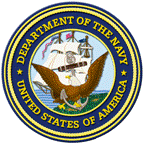United States Department of Defense

United States Navy: Publications
Date of this Version
Spring 2016
Citation
Naval Aviation News, Spring 2016
Abstract
The Naval Academy recently hosted its annual Astronaut Convocation, inviting five of our 53 astronaut graduates to the Yard to discuss the future of the space program with the Brigade of Midshipmen. Among them was U.S. Marine Corps Maj. Nicole Aunapu Mann (’99), the most recent United States Naval Academy (USNA) graduate to be selected by NASA.
Mann joins an illustrious line of Naval Academy alumnae who have served in the U.S. space program. One of the academy’s earliest woman graduates was retired Capt. Wendy Lawrence, my classmate from the great Class of 1981 and the first woman from USNA to fly in space. Capt. Sunita Williams (’87) is one of four members—and the only woman—on NASA’s new commercial spaceflight team, selected to partner with private sector companies developing spacecraft that will fly astronauts to the International Space Station. The Naval Academy’s representation in the past and future of space flight is just one example of our graduates’ achievements at the highest levels. As we mark the 40th anniversary of the integration of women at the Naval Academy, I’d like to highlight how far we’ve come and look ahead in anticipation of a bright future. On July 6, 1976, the Class of 1980 arrived on Induction Day. Four years later, 55 women from that class graduated, becoming the plankowners of gender integration at this great institution— an accomplishment that we celebrated last year at the 35th Reunion for the Class of 1980. Compare that to our most recent graduates—of the 1,070 midshipmen who graduated last May, 204 were women. And the numbers continue to grow. More women have applied for admission than ever before (more than 4,300 applications!) for the soon-tobe- inducted Class of 2020. The current Plebe Class of 2019 boasts the largest number of women in academy history—ANY academy—with 324 inducted last July. In a summer marked by near record-low attrition, every woman completed Plebe Summer. Women now comprise more than a quarter of the Brigade. Female representation will continue to grow; America’s talented youth are clearly attracted to the Naval Academy and the missions of the U.S. Navy and U.S. Marine Corps. More importantly, beyond just the numbers, the evolution of gender integration has made significant positive progress over the past four decades. With combat positions being opened to all women starting next year, the attitude and personality of the Brigade has become one of inclusiveness for all, men and women.

